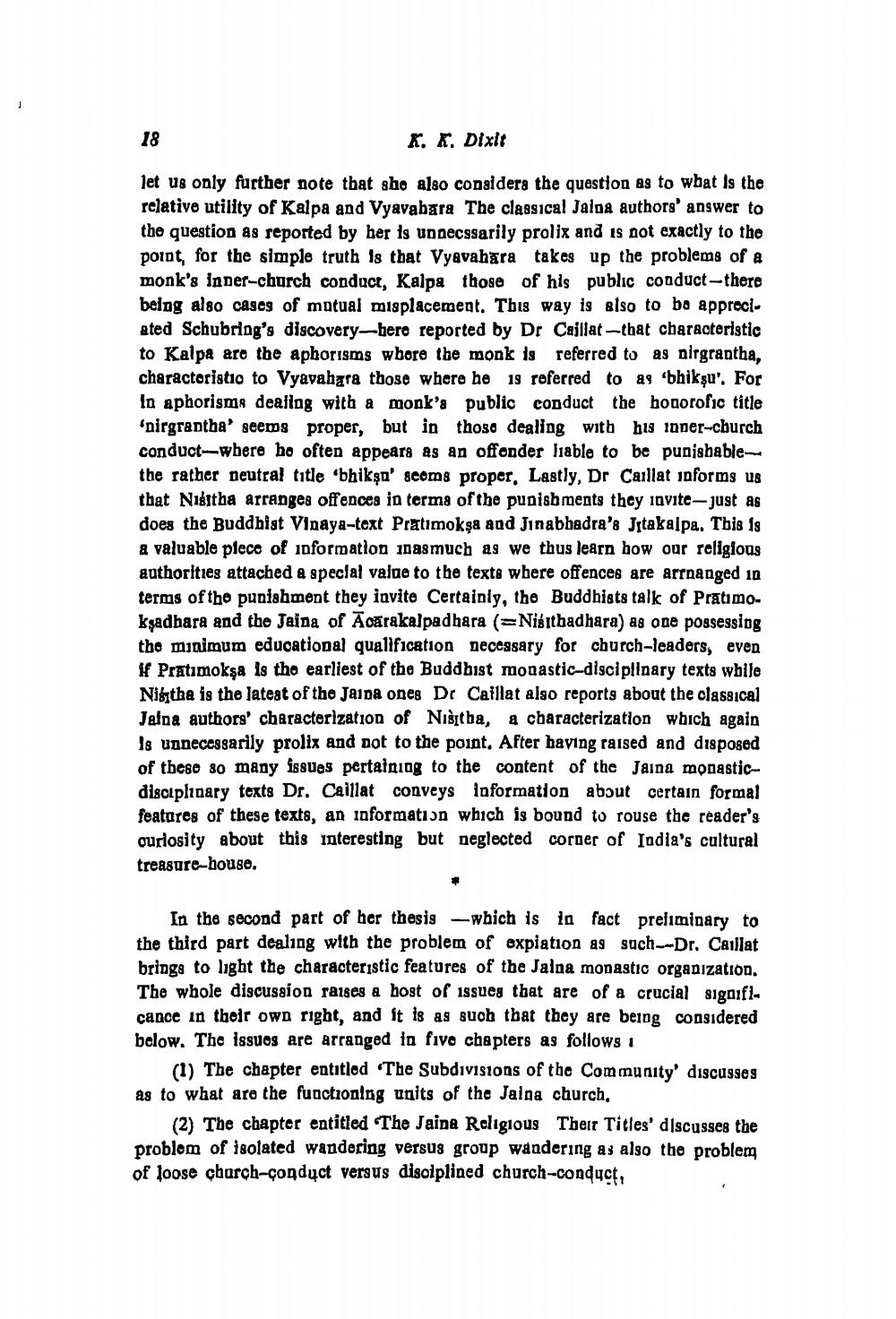________________
18
X. X. Dixit
let us only further note that she also considers the question as to what is the relative utility of Kalpa and Vyavabära The classical Jaloa authors' answer to the question as reported by her is unnecssarily prolix and is aot exactly to the point, for the simple truth is that Vyavahara takes up the problems of a monk's inner-church conduct, Kalpa those of his public conduct there being also cases of mutual misplacement. This way is also to bo approciated Schubriog's discovery-here reported by Dr Caillat-that characteristic to Kalpa are the aphorisms whore the monk is referred to as airgrantha, characteristio to Vyavahara those where he 18 referred to as 'bhikṣu'. For In aphorisms dealing with a monk's public conduct the honorofic title 'pirgrantha' seems proper, but in those dealing with his inner-church conduct-wbere ho often appears as an offonder liable to be punishablethe rather neutral title 'bhikşa' scoms proper, Lastly, Dr Caillat informs us that Nikitha arranges offences in terms of the punishments they cavite- just as does the Buddhist Vinaya-text Pratimokşa and Jinabhadra's Jitakalpa. This is a valuable piece of information in as much as we thus learn how our religious authorities attached a special value to the texts where offences are arrnanged in terms of the punishment they invite Certainly, the Buddhists talk of Pratimokşadhara and the Jaina of Ādarakalpadbara (=Nišithadhara) as one possessing the minimum educational qualification necessary for church-leaders, even # Pratimokṣa is the earliest of the Buddhist monastic-disciplinary texts while Nistha is the latest of the Jaida ones Dc Caillat also reports about the classical Jalna authors' characterization of Nišitba, a characterization which again 18 unnecessarily prolix and not to the point. After having raised and disposed of these so many issues pertaining to the content of the Jaina monasticdisciplinary texts Dr. Caillat conveys information about certain formal features of these texts, an information which is bound to rouse the reader's ouriosity about this interesting but neglected corner of India's cultural treasure-house.
In the second part of her thesis —which is in fact preliminary to the third part dealing with the problem of expiation as such-Dr. Caillat brings to light the characteristic features of the Jalna monastic organization. The whole discussion raises a host of issues that are of a crucial significance in their own right, and it is as such that they are being considered below. The issuos are arranged to five chapters as follows 1
(1) The chapter entitled 'The Subdivisions of the Community' discusses as to what are the fuactioning units of the Jaina church,
(2) The chapter entitled The Jaina Religious Their Titles' discusses the problem of isolated wandering versus group wandering as also the problem of loose church-conduct versus disolplined church-conduct,




